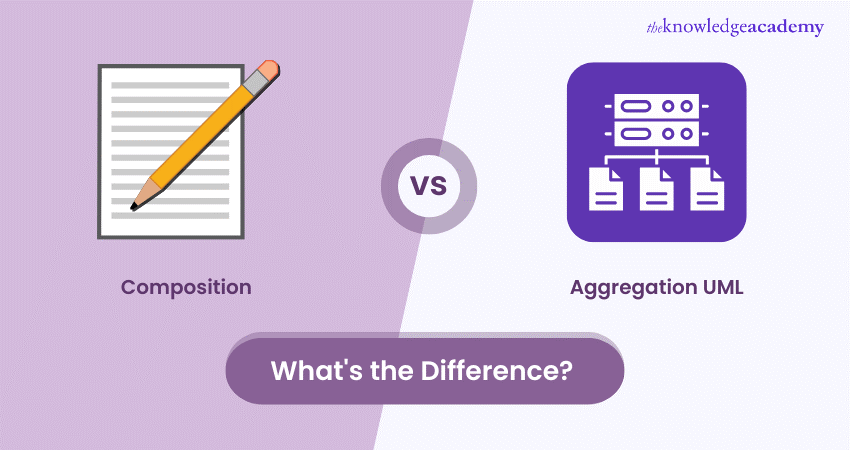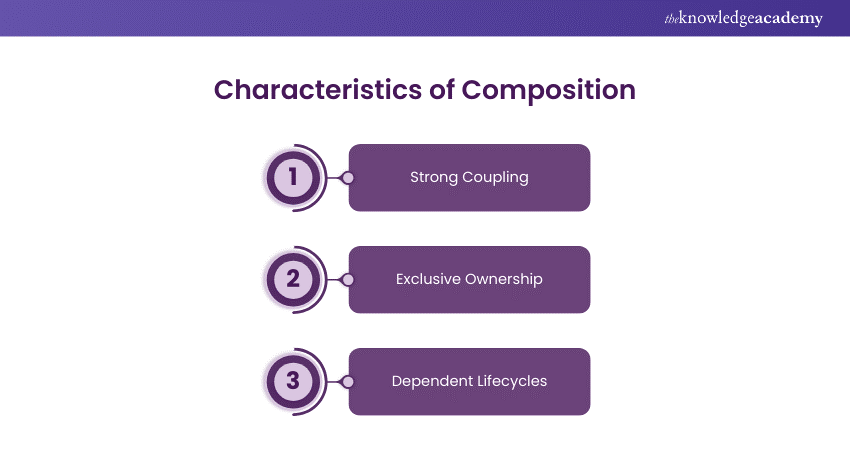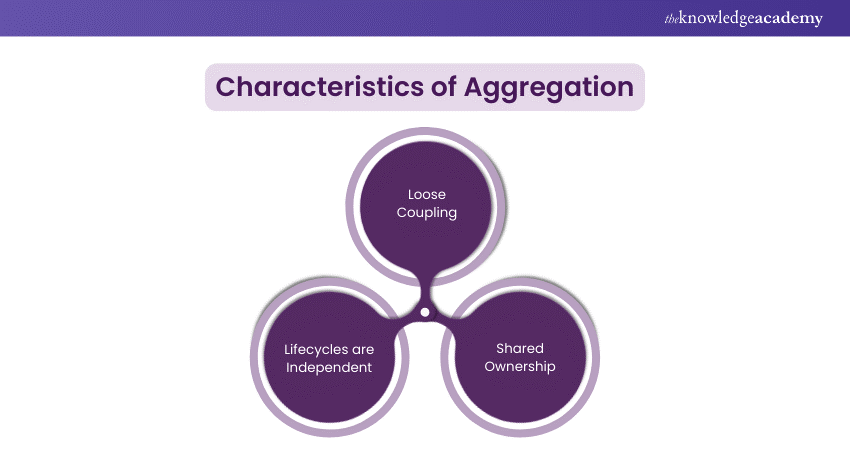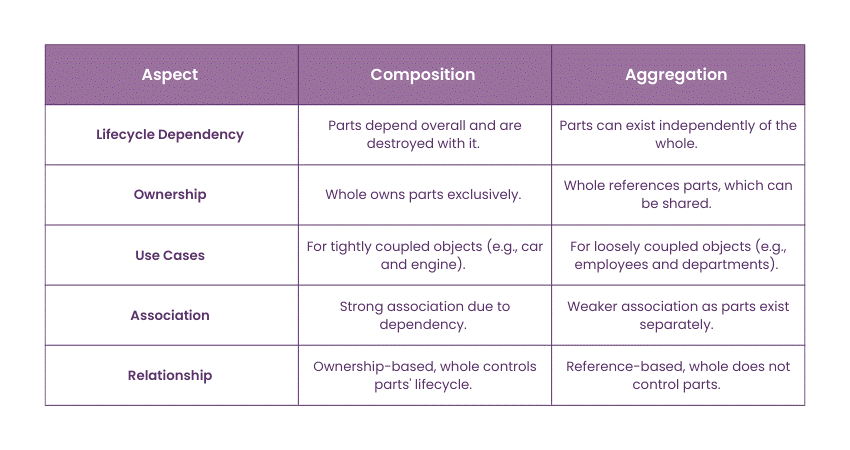We may not have the course you’re looking for. If you enquire or give us a call on +08000201623 and speak to our training experts, we may still be able to help with your training requirements.
Training Outcomes Within Your Budget!
We ensure quality, budget-alignment, and timely delivery by our expert instructors.

In Unified Modeling Language (UML) both Composition and Aggregation serve as important tools for defining how objects are connected. However, while they may seem similar at first glance, these two relationships are fundamentally different in terms of ownership, lifecycle, and dependency. So, what exactly sets them apart? In this blog, we’ll break down the Composition vs Aggregation UML to help you make informed design decisions.
Understanding Composition vs Aggregation UML is essential for crafting flexible, maintainable systems. Using the right relationship type ensures that objects behave as intended throughout their lifecycle. By carefully evaluating the characteristics of composition and aggregation, you’ll be better equipped to model your system’s architecture effectively, making it easier to manage and scale over time.
Table of Contents
1) What is Composition?
2) What is Aggregation?
3) Differences Between Composition and Aggregation UML
a) Lifecycle Dependency
b) Ownership Relationship
c) Appropriate Use Case
d) Association
e) Relationship
4) Conclusion
What is Composition?
Composition, in contrast, is a stronger relationship in UML. It also represents a whole-part relationship, but here, the parts are entirely dependent on the whole. This type of relationship signifies ownership, meaning that if the whole object is destroyed, the parts cease to exist. Composition is often called a "strong" relationship because it tightly couples the whole and its parts.
Essential Characteristics of Composition
Composition differs from aggregation in several fundamental ways. Here are the essential characteristics:

1) Strong Coupling: The whole object owns its parts, and the parts cannot exist without the whole. This creates a strong coupling between the two.
2) Exclusive Ownership: The parts belong exclusively to the whole object. They cannot be shared with other objects, and if the whole is destroyed, the parts are also destroyed.
3) Dependent Lifecycles: The parts rely entirely on the lifecycle of the whole. If the whole object is removed, the parts will no longer exist.
Example of Composition
Let’s look at a "House" class that contains "Rooms." In this scenario, the house is the whole object, and the rooms are the parts. If the house is demolished, the rooms, as parts of the house, are also destroyed. They cannot exist independently without the house. In UML diagrams, composition is depicted using a filled diamond shape pointing to the composite (whole) object.
What is Aggregation?
Aggregation is a type of association in UML that depicts a whole-part relationship between objects. It signifies a "has-a" relationship, where one object, the aggregate, contains a collection of other objects, the parts, without implying ownership. The parts exist independently of the whole. For instance, a department in a company may have employees, but if the department is dissolved, the employees still exist as individual entities.
Discover the fundamentals of UML and enhance your modelling skills with our comprehensive Introduction to UML Course – register now!
Essential Characteristics of Aggregation
Aggregation is often referred to as a "weak" relationship because the existence of the part objects is not contingent on the aggregate. Here are some essential characteristics of aggregation:

1) Loose Coupling: The aggregate and its parts are loosely coupled, meaning the parts can exist independently of the whole. The aggregate simply holds references to its parts, but it doesn’t own them.
2) Shared Ownership: The parts may be shared across multiple aggregates. For example, an employee may work for multiple departments, but they are not owned by any single department.
3) Lifecycles are Independent: The lifecycle of the aggregate and its parts are independent. If the aggregate object is destroyed, the parts can continue to exist elsewhere in the system.
Example of Aggregation
Consider a "Library" class that contains a collection of "Books." In this example, the library is the aggregate, and the books are the parts. The key point here is that the books can exist outside the library; if the library is closed, the books still remain and can be moved to another library or sold independently. In UML, aggregation is represented by a hollow diamond shape pointing to the aggregate class.
Differences Between Composition and Aggregation UML
Understanding the nuances between composition and aggregation is crucial when designing a system in UML. Let’s delve into the key differences between the two.

1) Lifecycle Dependency
One of the primary differences between composition and aggregation is lifecycle dependency. In composition, the parts are tightly bound to the whole object’s lifecycle. If the whole object is destroyed, the parts will also be destroyed. For example, in a car, the engine is a part of the car. If the car is dismantled, the engine will no longer function as a car engine.
On the other hand, in aggregation, the parts can exist independently of the aggregate. This means that even if the whole object is removed, the parts remain intact and functional. For example, if a company closes, its employees continue to exist and can find employment elsewhere.
2) Ownership Relationship
Ownership is another distinguishing factor. In composition, the whole object has its parts. The parts cannot exist independently and cannot be shared with other objects. They are exclusive to the whole and are created and destroyed along with it. For example, the rooms in a house are exclusive to that house and cannot be part of another house.
In aggregation, however, the whole object does not own the parts. It may reference them, but they can be shared with other objects. The parts can exist independently and be reused in different contexts. For instance, an employee can belong to multiple departments without being exclusively owned by one.
3) Appropriate Use Cases
When deciding between composition and aggregation in UML, the use case plays a critical role. Composition is suitable when the parts and the whole are tightly coupled, and the parts should not exist independently. It’s typically used in cases where ownership is exclusive, and the parts are destroyed along with the whole. An example would be a car and its engine, where the engine cannot exist independently from the car.
Aggregation, on the other hand, is ideal when the parts can exist independently and are not tightly coupled to the whole. It’s commonly used in scenarios where shared ownership or reuse is required. For example, in a system where employees can be associated with multiple departments, aggregation is the right choice.
4) Association
Both composition and aggregation are types of association in UML, but they differ in the strength of the association. Composition is a stronger form of association due to the dependency of the parts on the whole. Aggregation is a weaker form of association because the parts and the whole can exist independently.
5) Relationship
In composition, the relationship is one of ownership, where the whole owns and controls the lifecycle of the parts. In aggregation, the relationship is one of reference rather than ownership. The parts are referenced by the whole but are not owned by it.
Elevate your skills in analysis and design with Analysis & Design Using UML Course to build robust, comprehensive, and professional systems.
Conclusion
In UML, aggregation and composition are both vital tools for modelling object relationships. While they both represent whole-part relationships, aggregation is a weaker form of association, where the parts can exist independently, whereas composition is a stronger form, with the parts being entirely dependent overall. Understanding Composition vs Aggregation UML is key to effectively modelling a system's structure. By choosing the right type of association, you can create a more efficient and logical design that accurately reflects the relationships between objects.
Join our UX Design Course to master User Experience design and create engaging user-friendly digital interfaces – Register today!
Frequently Asked Questions

Composition offers flexibility as it allows objects to reuse functionality without inheriting unnecessary behaviors. Unlike inheritance, which tightly couples classes, composition allows you to combine objects dynamically and promotes better modularity.

Composition establishes a strong whole-part relationship where parts depend on the whole object for existence. Aggregation, however, creates a weaker association, where parts can exist independently of the whole.

The Knowledge Academy takes global learning to new heights, offering over 30,000 online courses across 490+ locations in 220 countries. This expansive reach ensures accessibility and convenience for learners worldwide.
Alongside our diverse Online Course Catalogue, encompassing 19 major categories, we go the extra mile by providing a plethora of free educational Online Resources like News updates, Blogs, videos, webinars, and interview questions. Tailoring learning experiences further, professionals can maximise value with customisable Course Bundles of TKA.

The Knowledge Academy’s Knowledge Pass, a prepaid voucher, adds another layer of flexibility, allowing course bookings over a 12-month period. Join us on a journey where education knows no bounds.

The Knowledge Academy offers various UML Training, including Introduction to UML and Analysis & Design Using UML. These courses cater to different skill levels, providing comprehensive insights into UML Diagram Tools.
Our Programming & DevOps Blogs cover a range of topics related to UML, offering valuable resources, best practices, and industry insights. Whether you are a beginner or looking to advance your Programming skills, The Knowledge Academy's diverse courses and informative blogs have got you covered.
Upcoming Programming & DevOps Resources Batches & Dates
Date
 Introduction to UML
Introduction to UML
Fri 10th Jan 2025
Fri 14th Feb 2025
Fri 11th Apr 2025
Fri 23rd May 2025
Fri 8th Aug 2025
Fri 26th Sep 2025
Fri 21st Nov 2025







 Top Rated Course
Top Rated Course



 If you wish to make any changes to your course, please
If you wish to make any changes to your course, please


